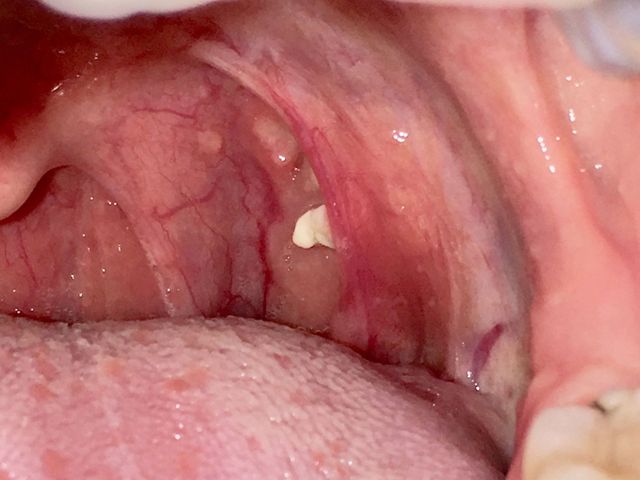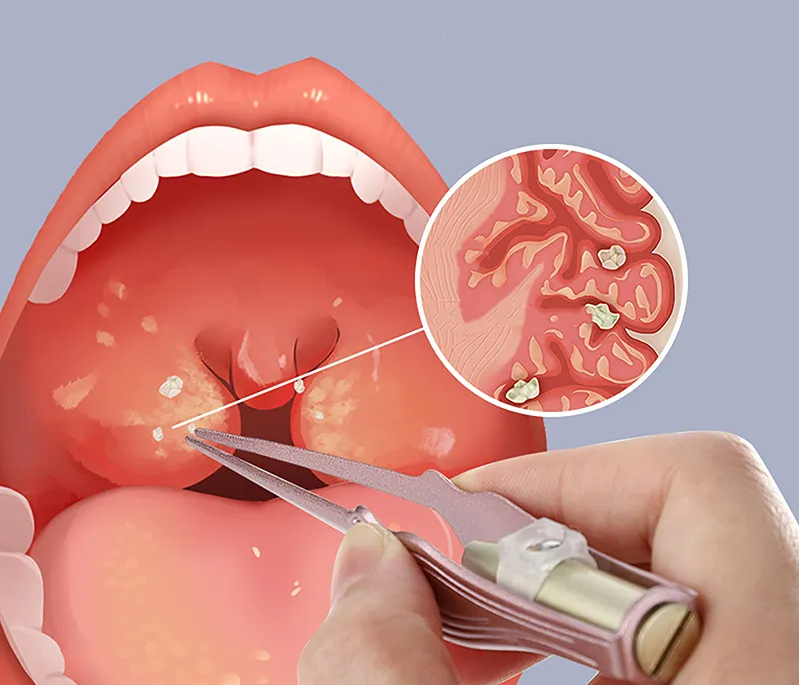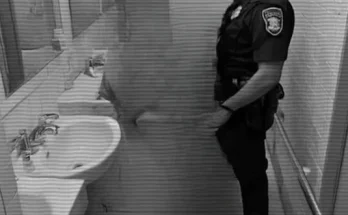
In fact, the most common sign that you might have a tonsil stone is surprisingly simple: chronic bad breath. That’s right—if you’ve been popping mints like candy and chewing gum like it’s your job, but still find people taking a step back during conversation, it might be time to shine a flashlight down your throat.
Some people describe the smell of tonsil stones as “rotten,” “sulfuric,” or even “cheesy.” And yes, we know how unpleasant that sounds, but hey, this is the human body we’re talking about—it doesn’t always smell like roses.
But what do tonsil stones look like?
They’re often small, white or yellowish, and lodged into the crevices of your tonsils—almost like tiny pebbles or bits of cottage cheese. Some people only ever get one at a time; others might develop multiple simultaneously.
You might accidentally cough one up (gross, yes, but strangely satisfying for some), or you might spot one in the mirror when brushing your teeth. In other cases, they might only be visible using a tongue depressor and a phone flashlight—a DIY tonsil stone detective kit, if you will.

So how do they form?
Your tonsils have these small pockets called crypts, which are basically like tiny caves. These crypts can trap particles of food, dead cells, saliva, and bacteria. Over time, the trapped material calcifies—meaning it hardens—forming those notorious little stones.
It’s worth noting that some people are more prone to tonsil stones than others. This can be due to the size and depth of their tonsil crypts, poor oral hygiene, chronic sinus issues, or even having large tonsils in general.
Oh, and before you ask: no, tonsil stones are not contagious. You can’t “catch” them from someone else, but if you’re genetically inclined or have the right (or wrong?) set of circumstances in your mouth and throat, you might become a repeat customer.

Do you need to get rid of them?
Not always.
Most of the time, tonsil stones are harmless. If they’re not causing any symptoms, you might not even know they’re there. In fact, many people walk around with small stones that eventually dislodge on their own without any fuss.
But if you’re experiencing discomfort—bad breath, sore throat, or a persistent feeling like there’s something stuck in your throat—it might be time to take action.

Home Remedies for Tonsil Stones
Here’s the good news: in most cases, you don’t need a doctor’s appointment. Tonsil stones can often be removed at home with a few common tools and techniques.
-
Salt Water Gargle
This old-school remedy still works wonders. Gargling with warm salt water can help dislodge small stones and soothe any irritation they’ve caused. -
Cotton Swab Method
Gently using a clean cotton swab to press on your tonsil and push the stone out can be effective. It’s not for the faint of heart, though—some people find it too uncomfortable, and it can sometimes cause gagging. -
Water Irrigation
Oral irrigators like a water flosser (on a gentle setting!) can be directed at the tonsil crypts to flush out stones. It’s a bit messy, but many people swear by it. -
Coughing
Yep, a good ol’ cough might be all it takes. This is more likely to work with smaller stones, but it’s certainly the least invasive method. -
Good Oral Hygiene
Prevention is key. Brushing your teeth twice a day, flossing, and using an antibacterial mouthwash can reduce the buildup of debris and bacteria in your mouth.
When to See a Doctor
Sometimes, though, tonsil stones just won’t cooperate. If you’ve tried all the at-home methods and nothing works—or if you’re dealing with repeated infections, severe pain, or large stones that keep coming back—it might be time to call in the professionals.
An ENT (ear, nose, and throat) specialist can safely remove large or stubborn stones. In rare cases, if someone is experiencing chronic tonsil stones that are severely affecting their quality of life, they might even consider tonsillectomy (surgical removal of the tonsils).
That said, surgery is a last resort. Most doctors won’t recommend it unless there’s a compelling reason.

Why Are We So Obsessed with Watching Tonsil Stone Videos?
Let’s be honest here: there’s something oddly mesmerizing about watching those little white globs pop out of a tonsil. Much like the pimple-popping craze that preceded it, tonsil stone removal has a weirdly addictive quality.
It’s the build-up and release, the satisfaction of seeing something “trapped” get freed, the sense of cleanliness after something gross is expelled—it triggers a primitive part of our brains that loves resolution and order.
There’s even a community for it online. Entire YouTube channels and TikTok accounts are dedicated to tonsil stone removal. Some viewers tune in to learn how to deal with their own, others simply enjoy the strange comfort these videos seem to provide. You know what they say: one person’s nightmare is another person’s oddly specific form of relaxation.

Final Thoughts
The human body never stops surprising us. From pimples to earwax to yes, even tonsil stones, there’s no shortage of fascinating (and sometimes stomach-churning) content to be found.
If you’ve never had a tonsil stone before, consider yourself lucky—or maybe just blissfully unaware. For those who have, you’ll know that while they’re mostly harmless, they can be a real nuisance when they want to be.
The good news? You’ve now got a toolkit of knowledge and remedies at your disposal. So whether you’re dealing with a stone yourself or just indulging your curiosity by watching others handle theirs, one thing’s for sure: you’re not alone in your fascination.
And remember: the next time your breath smells funky and you’re sure it’s not the garlic bread, maybe it’s worth a little peek in the mirror. Just in case.



